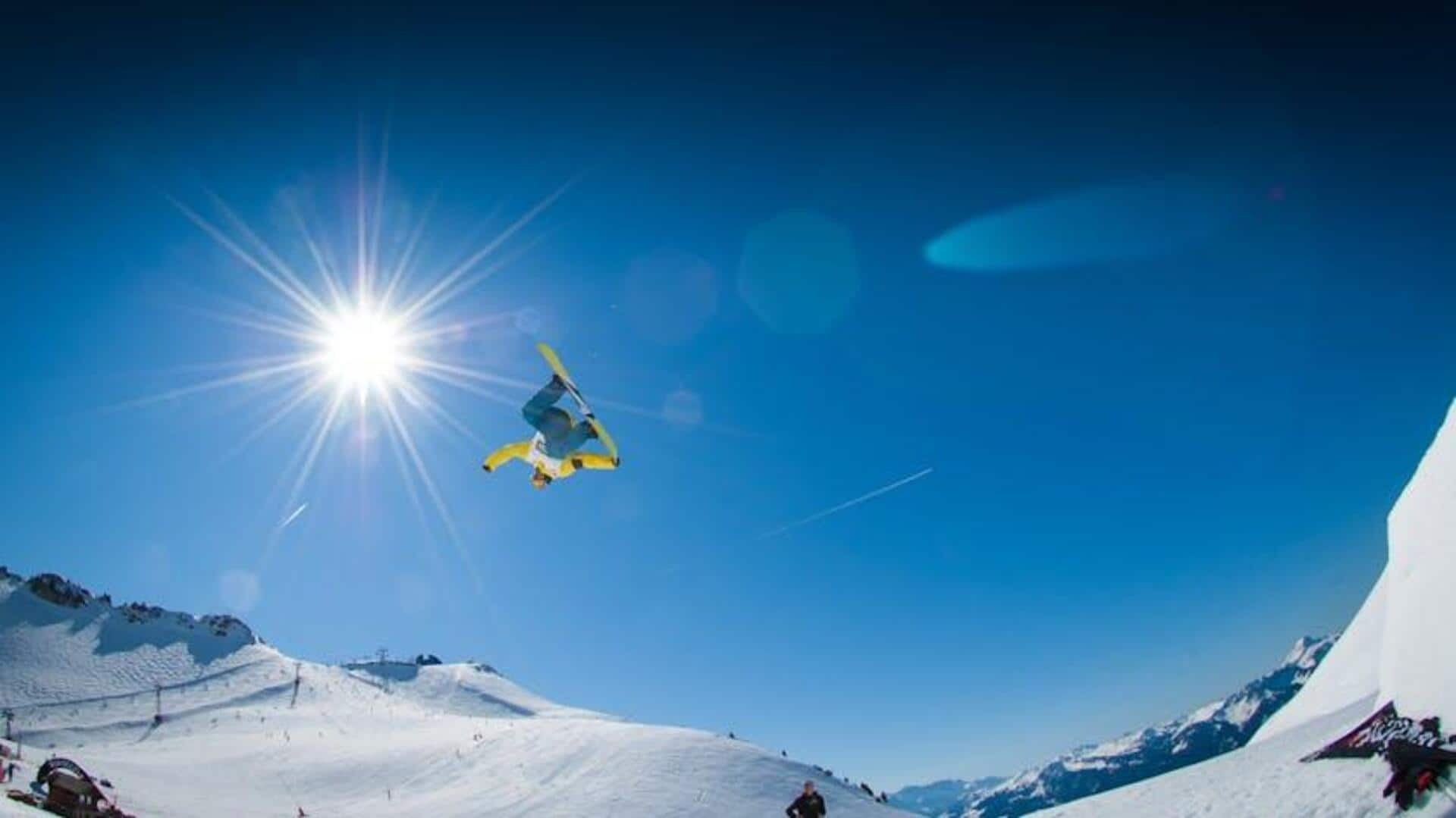
Master snowboarding with these balancing exercises
What's the story
Improving your snowboarding jump stability is crucial for both optimizing performance and maintaining safety on the slopes.
Strong legs are the key to delivering powerful and controlled jumps.
This article explores five effective leg exercises specifically tailored to strengthen snowboarders' jump stability, ensuring a smoother and more controlled descent.
By incorporating these exercises into your training routine, you can develop the leg strength and balance necessary for peak performance.
Squats
Squats for core and leg strength
Squats are a basic but powerful exercise that strengthen your quadriceps, hamstrings, and glutes - the muscles you need for jump stability in snowboarding.
By doing squats two to three times a week, you will build significant leg strength.
Remember to use good form: keep your back straight and your knees pointing the same direction as your toes as you squat down.
Lunges
Lunges for balance and stability
Lunges are also a great exercise for building leg strength and balance, which are key for performing stable jumps on a snowboard.
They target the quadriceps, hamstrings, and glutes, while also enhancing core stability.
Switch legs to maintain even muscle growth.
Doing three sets of 10 lunges on each leg twice a week will bring about a significant difference.
Calf raises
Calf raises for ankle support
Strong calves are crucial for snowboarding jumps as they stabilize your ankles and help absorb impact when you land.
Calf raises are straightforward and convenient - you can do them anywhere, with or without weights.
Try to do three sets of 15 reps at least twice a week for optimal results. This will improve strength and flexibility in your lower legs.
Plyometrics
Plyometric jump training for explosive power
Plyometric exercises condition your muscles to apply maximum force in short intervals of time, enhancing the explosive power necessary for snowboarding jumps.
Box jumps are especially advantageous as they closely replicate the motion of jumping on a board.
Begin with a lower height and progressively raise it as you gain confidence to prevent injury.
Hamstring curls
Hamstring curls for muscle balance
Maintaining balanced muscle strength between the front and back of your legs is key to preventing injuries and stabilizing jumps.
Hamstring curls, which target the back thigh muscles, are a perfect counterbalance to front-leg-focused exercises like squats.
Using a leg curl machine or resistance bands, aim for three sets of 12 repetitions twice a week to effectively build strength in these muscles.